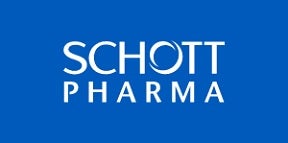With adaptiQ, SCHOTT will be unveiling a new concept of ready-to-use pharmaceutical vials that has been modified in close cooperation with filling line manufacturers to meet the process requirements of the pharmaceutical industry.
SCHOTT adaptiQ consists of a nest and tub configuration that allows for as many as 100 vials to be securely fixed inside a holder (nest) and delivered to the pharmaceutical company packaged in a sterile container. The company can then fill these vials on its filling line immediately without having to perform arduous processing steps like washing, drying and sterilisation.
What makes SCHOTT’s innovation unique is its patented nest design; unlike all of the other solutions currently on the market, adaptiQ allows for vials to be subjected to all of the processing steps while inside the nest, even freeze-drying, weighing and closing for the first time ever. Besides simplifying the process, the main focus is on protecting the glass containers, which can no longer come into contact with each other or be scratched by coming into contact with machine components.
Market introduction is scheduled for Q3/2014 and will start with the most popular ISO formats 2R and 4R. SCHOTT adaptiQ is expected to be gradually introduced in all of the most common ISO formats ranging from 2ml to 30ml. The company plans to make initial samples available starting at the end of October 2013.
Companies are showing much greater interest in flexible manufacturing concepts that allow for small batches or different ingredients/packaging configurations to be filled more efficiently.
SCHOTT adaptiQ responds to this challenge by offering three special advantages. Product manager Gregor Deutschle said: "If pharmaceutical companies can use the same production line for various lot sizes and different types of containers like syringes, vials and cartridges, this gives them much greater freedom to react to new market demands more quickly.
"Moreover, costs can be lowered by shortening the process chain and reducing its complexity. It is then no longer necessary to invest in clean rooms, special washing machines and sterilisation tunnels, or spend money to operate them."
Yet another advantage is the avoided glass-to-glass contact: securely fixed inside the nest, the containers are no longer able to tip over, fall out or collide with one another. This not only reduces the reject rate, but ensures the cosmetic quality of these packaging products.

